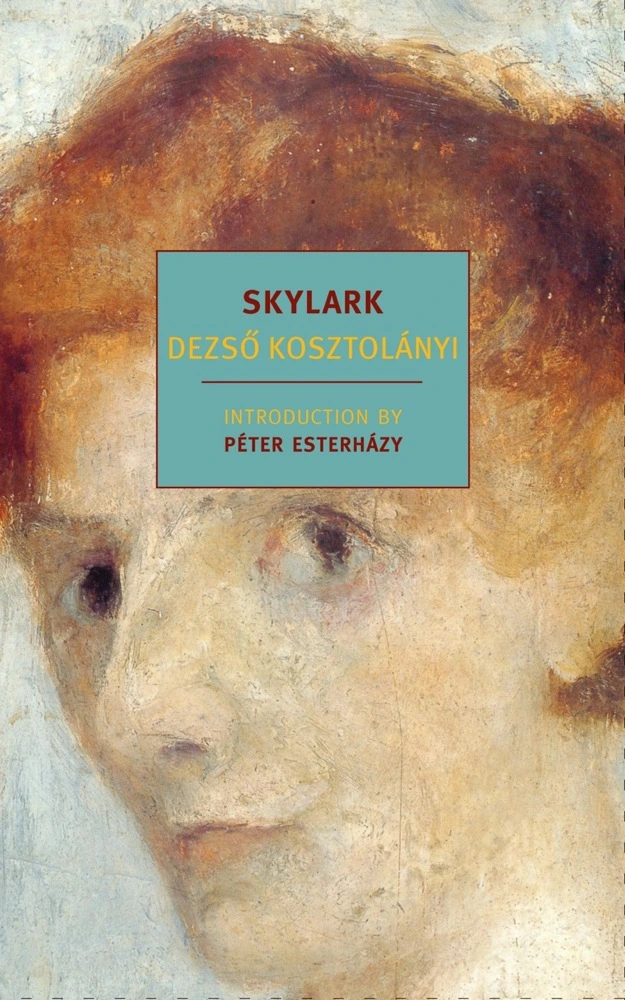Skylark


DEZSŐ KOSZTOLÁNYI (1885–1936) was born in Subotica, a provincial Austro-Hungarian city (located in present-day Serbia) that would serve as the model for the fictional town in which he later set several novels, including Skylark. His father was the headmaster of the local gymnasium, which he attended until he was expelled for insubordination. Kosztolányi spent three years studying Hungarian and German at the University of Budapest, but quit in 1906 to go into journalism. In 1908 he was among the first contributors to the legendary literary journal Nyugat; in 1910, the publication of his second collection of poems, The Complaints of a Poor Little Child, caused a literary sensation. Kosztolányi turned from poetry to fiction in the 1920s, when he wrote the novels Nero, the Bloody Poet (to which Thomas Mann contributed a preface); Skylark; and Anna Edès. An influential critic and, in 1931, the first president of the Hungarian PEN Club, Kosztolányi was also celebrated as the translator of such varied writers as Shakespeare, Lewis Carroll, Oscar Wilde, Verlaine, Baudelaire, Goethe, and Rilke, as well as for his anthology of Chinese and Japanese poetry. He was married to the actress Ilona Harmos and had one son.
RICHARD ACZEL teaches English literature at the University of Cologne, Germany. He is a playwright and founding director of the theater company Port in Air. His translations from the Hungarian include Ádám Bodor's The Euphrates at Babylon and Péter Esterházy's The Glance of Countess Hahn-Hahn: Down the Danube.
PÉTER ESTERHÁZY was born in Budapest in 1950. He is one of Hungary's most prominent writers, and his short stories, novels, and essays have been published in more than twenty languages.
SKYLARK
DEZSŐ KOSZTOLÁNYI
Translated from the Hungarian by
RICHARD ACZEL
Introduction by
PÉTER ESTERHÁZY
New York Review Books
New York

Contents
Cover
Biographical Note
Title Page
Introduction
Skylark
Chapters: I, II, III, IV, V, VI, VII, VIII,
IX, X, XI, XII, XIII
Copyright and more information
Introduction
Everyone was born at that time: Joyce, Musil, Broch, Rilke, Thomas Mann, Kafka, Einstein, Picasso, Wittgenstein. They were all there in their respective cradles, everyone who counted, le tout Paris. The Hungarian modern classics were there too: Endre Ady, Mihály Babits, Gyula Krúdy, Zsigmond Móricz, Lajos Kassák, Béla Bartók, Zoltán Kodály.
Everything came together rather nicely at the turn of the century, before the world collapsed. A spiritual golden age, in which one of the most important and glittering actors was Dezső Kosztolányi.
He was born in Szabadka (Subotica)1 in 1885, in that (to use his words) poor, grey, boring, dusty, bored, comical, provincial town. Even if we don't believe literature to be a mirror, in which reality catches a terror-stricken glimpse of itself, we can still admit that whoever reads Skylark(and also The Golden Kite) can recognise in Sárszeg the Szabadka of the fin de siècle. The years of the fin de siècle are years of progress, of industrialisation; it is then that Budapest is born and at once becomes a genuine big city–even a little bigger than it really is.
Szabadka is an in-between city, neither one thing nor the other, frightfully respectable, its development well balanced, not as impetuous as, say, the more southerly Újvidék (Novi Sad), but not motionless either, like the more northerly Danubian town Baja. A similar indeterminacy can be felt in its bourgeoisie too; that is, the so-called gentlemanly middle class whose ambiguities we can see close up in Skylark. For this bourgeoisie considers itself heir both to the anti-Habsburg revolution of 1848 and to the Ausgleich of 1867, the compromise with Habsburg Austria, the birth of Kakania.2
Kosztolányi is a sparkling youth, as talented as the sun. He is thrown out of the school where his father is headmaster, perhaps in the spirit of the above-mentioned ambiguities, but more likely because of an argument about rhyme in the school literary debating society, where he refused to accept the authority of his teachers. His cousin is Géza Csáth, whose short prose pieces are in fact the first modern texts, the first writings that are really of this century.3
Kosztolányi arrives at the University of Budapest where he gets to know, among others, the poets Mihály Babits and Gyula Juhász. The correspondence of the three young men is touchingly beautiful, slapdash, pompous, charming, sensitive, far-sighted and ambitious. Kosztolányi gets a taste of the city and immediately falls in love with it. He is one of the most steadfast, faithful lovers of Budapest. A good lover. For a short time he studies in Vienna, but gives it up, and at the age of twenty-three becomes a journalist for a Budapest daily, replacing the poet Endre Ady who is in Paris. He never breaks with journalism throughout his life. Generations have (or haven't) learned from him how to write a little two- or three-page feature.
He begins his literary career with poems and symbolic short stories. The first volume of poems to bring nationwide success is The Complaints of a Poor Little Child, which appears in 1910. After this he publishes a book nearly every year. Kosztolányi wants everything: life, literature, success.
In 1908 the journal Nyugat (West) had been founded, the alpha and omega of modern Hungarian literature. Even today the voices of our older literary colleagues still falter when they speak about an exceptional experience, like being booted out by the fearsome editor, Ernő Osvát.
1 comment